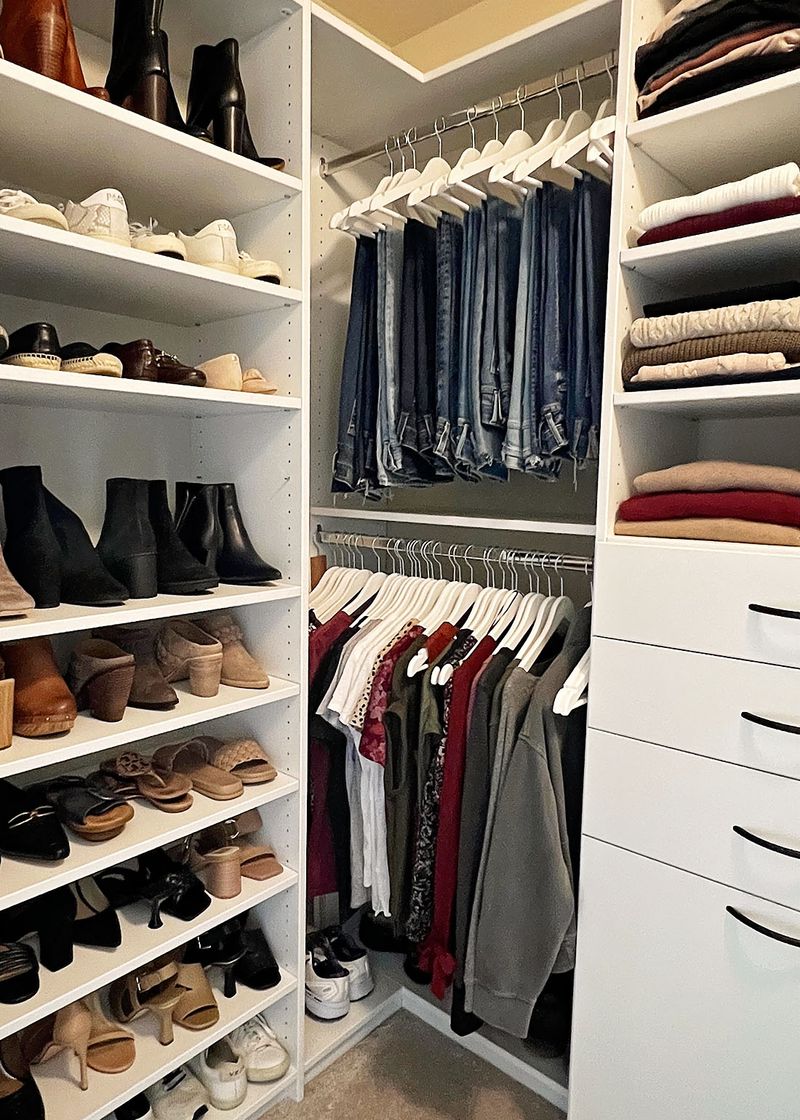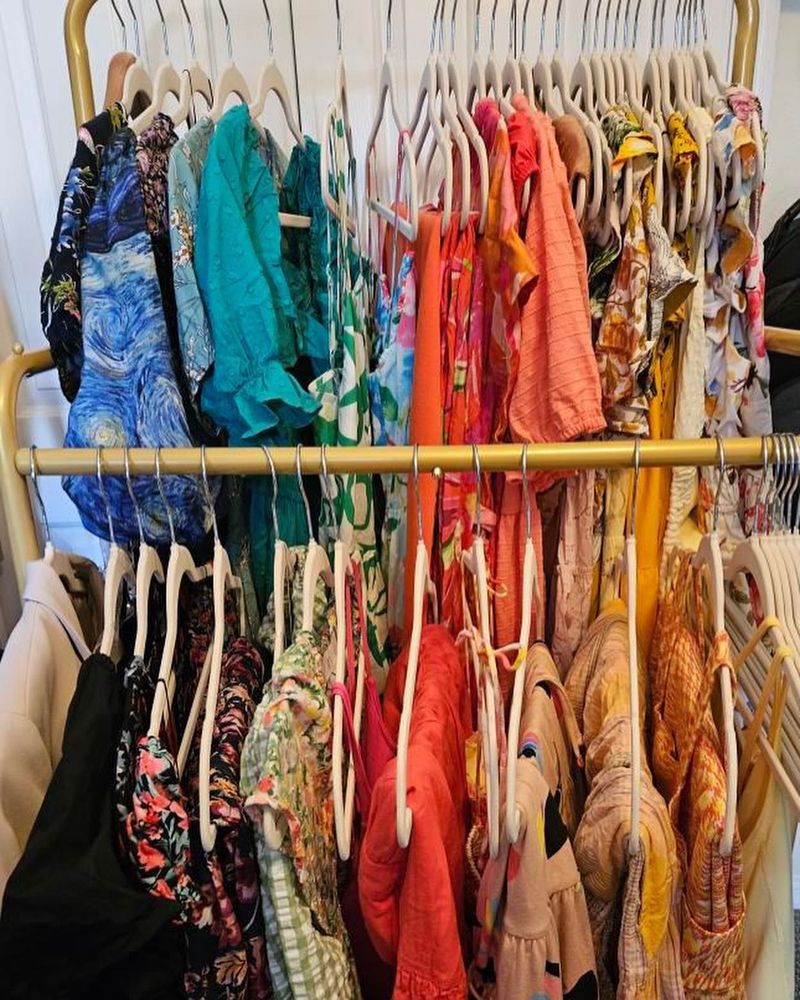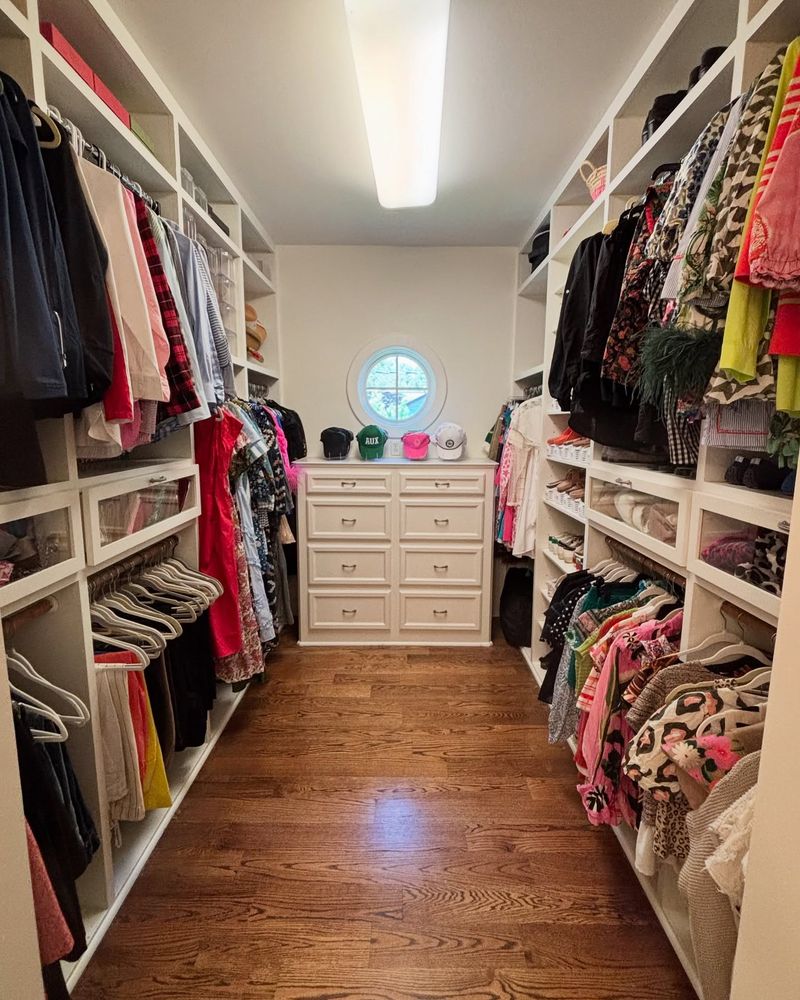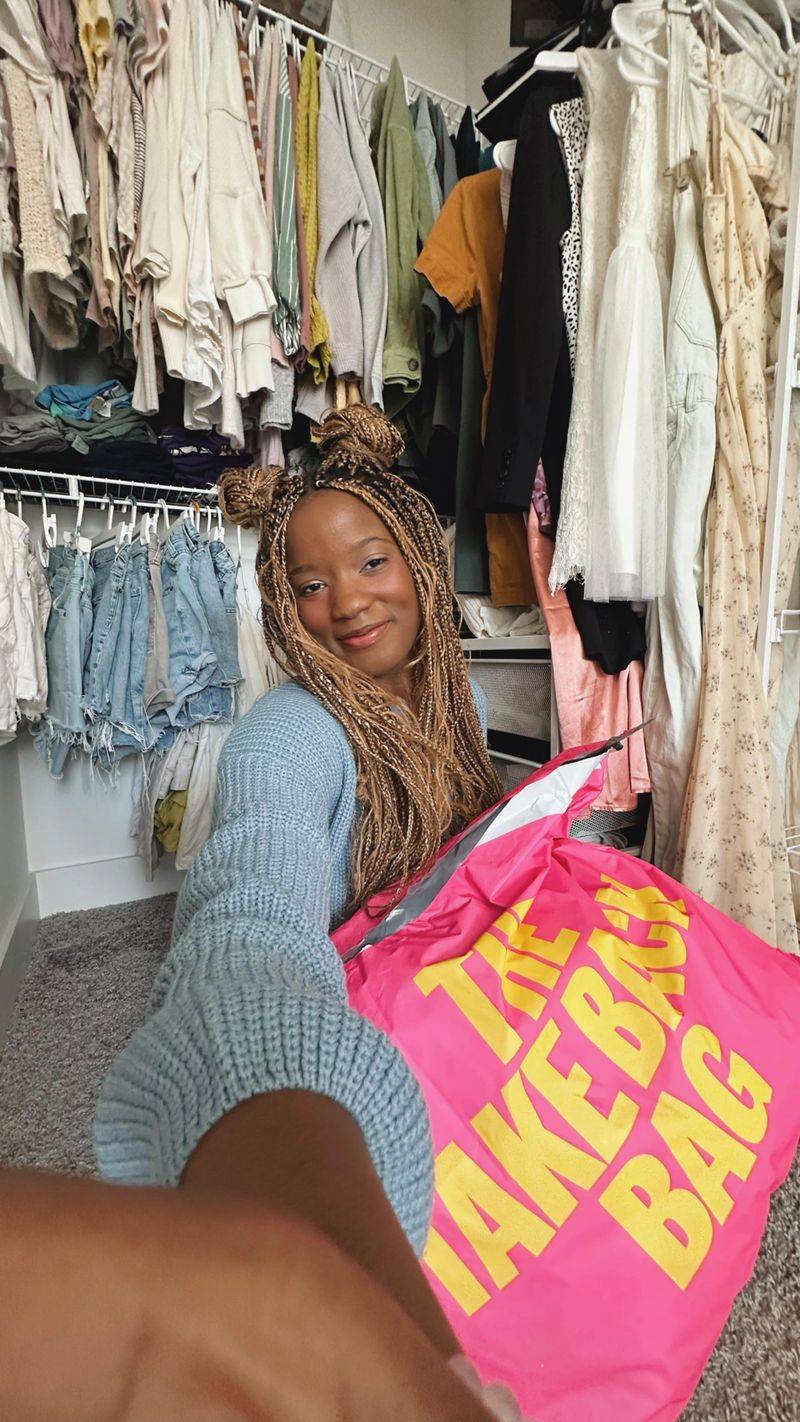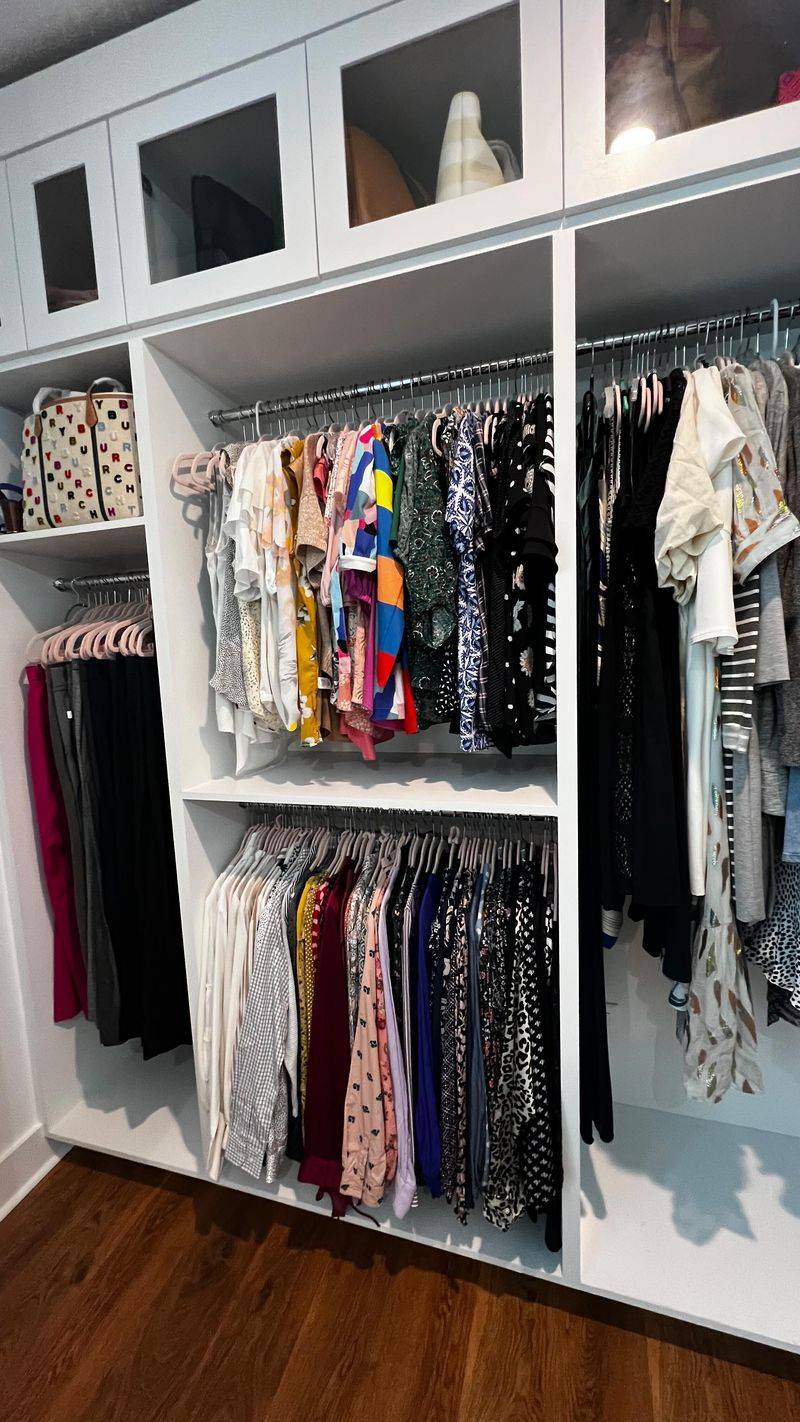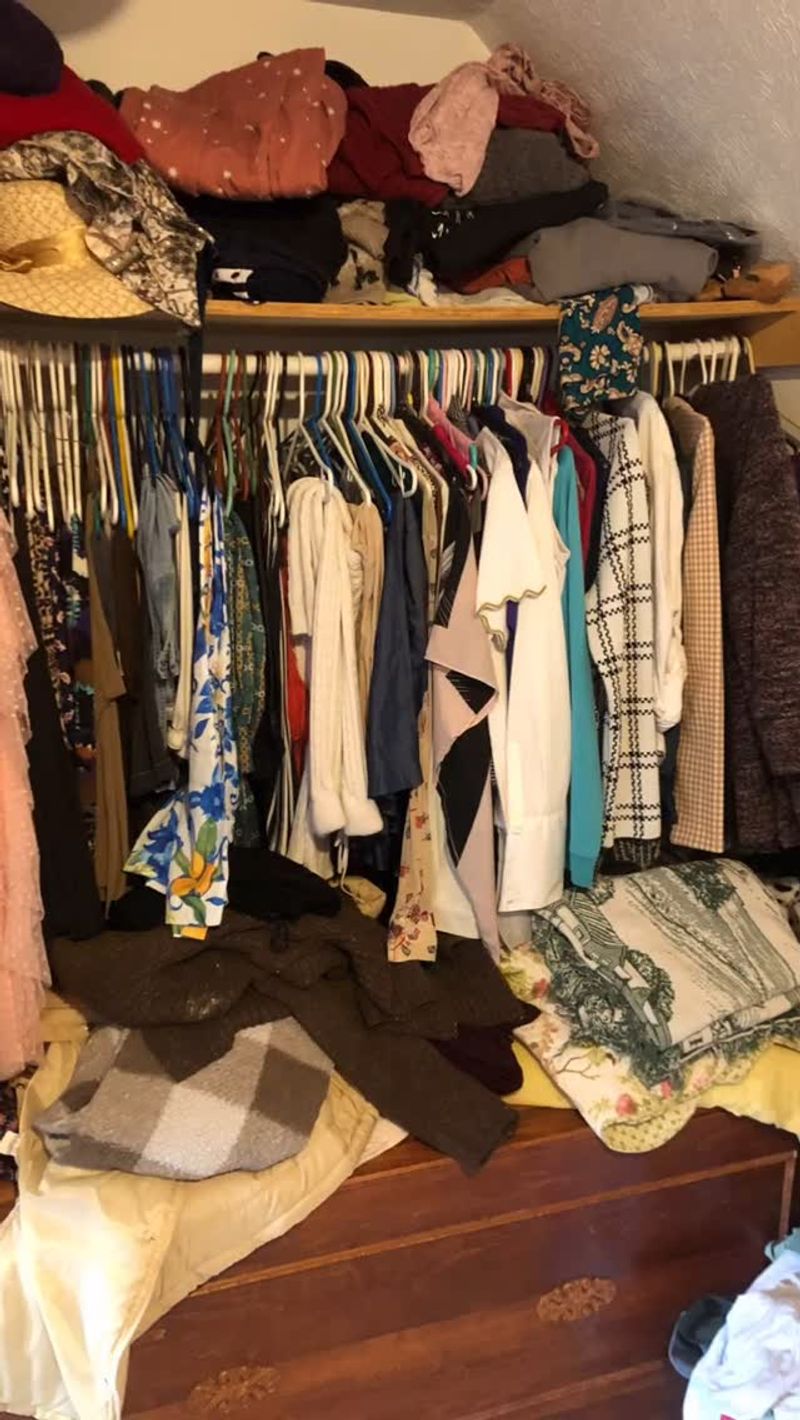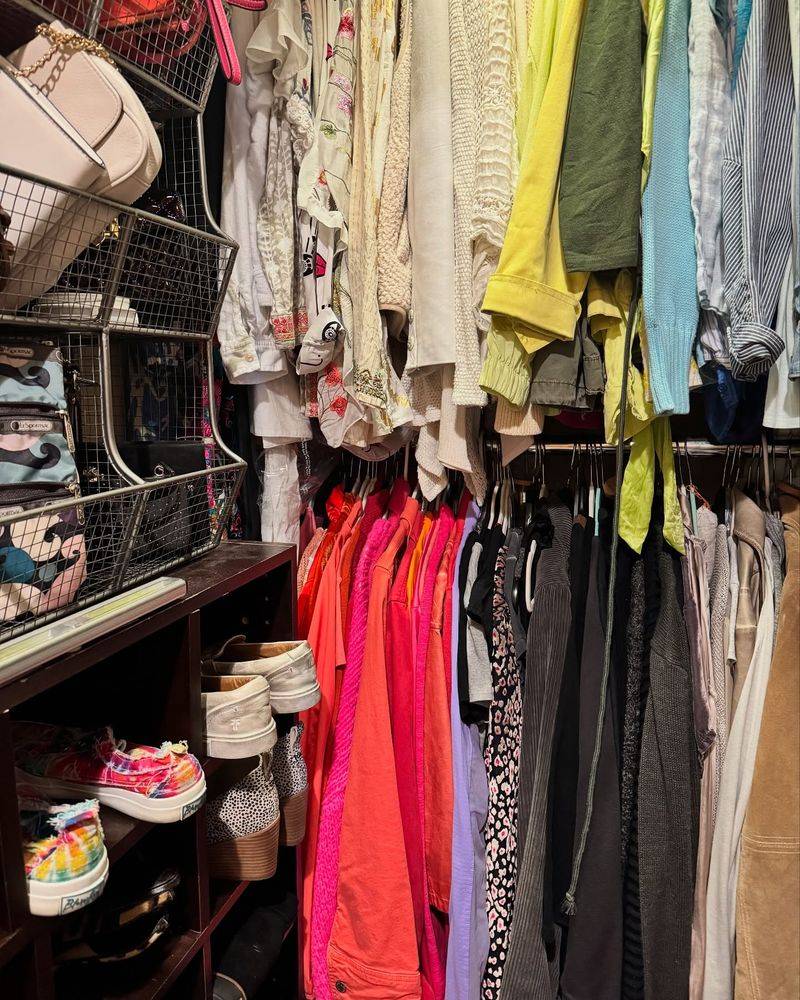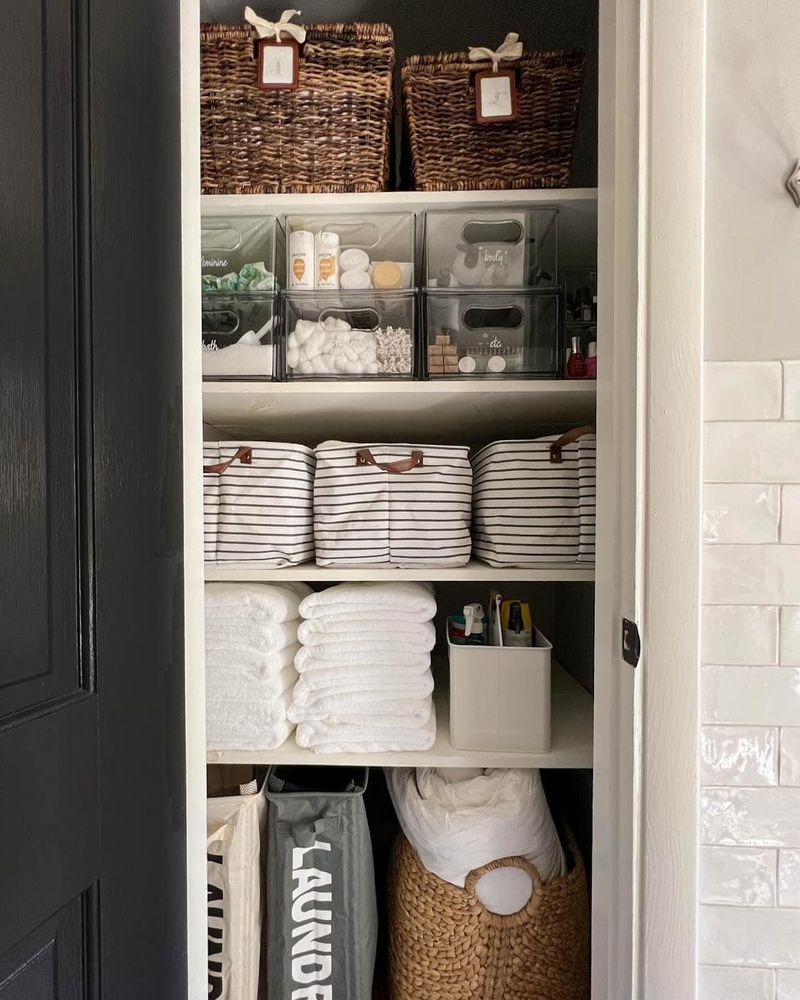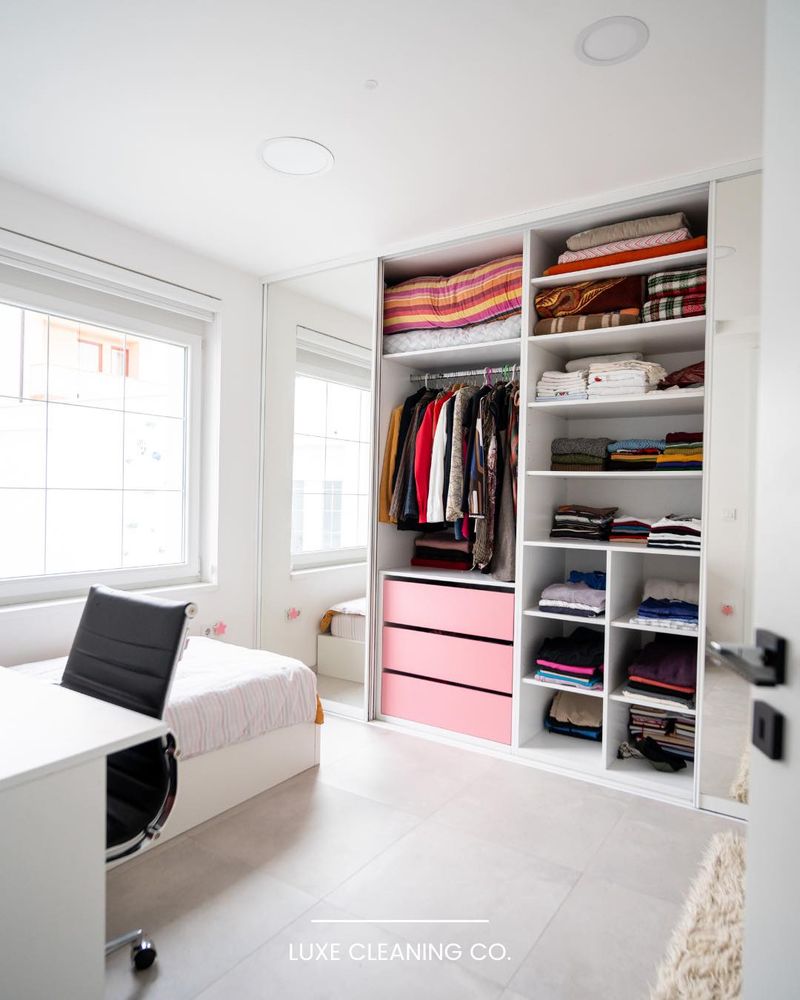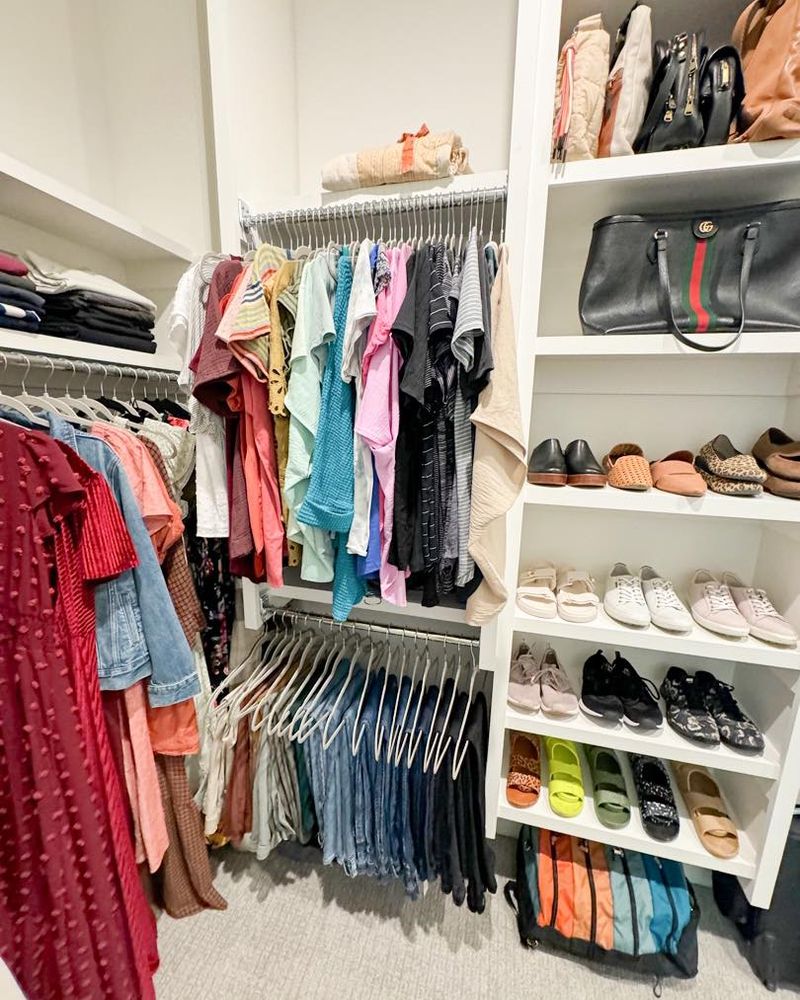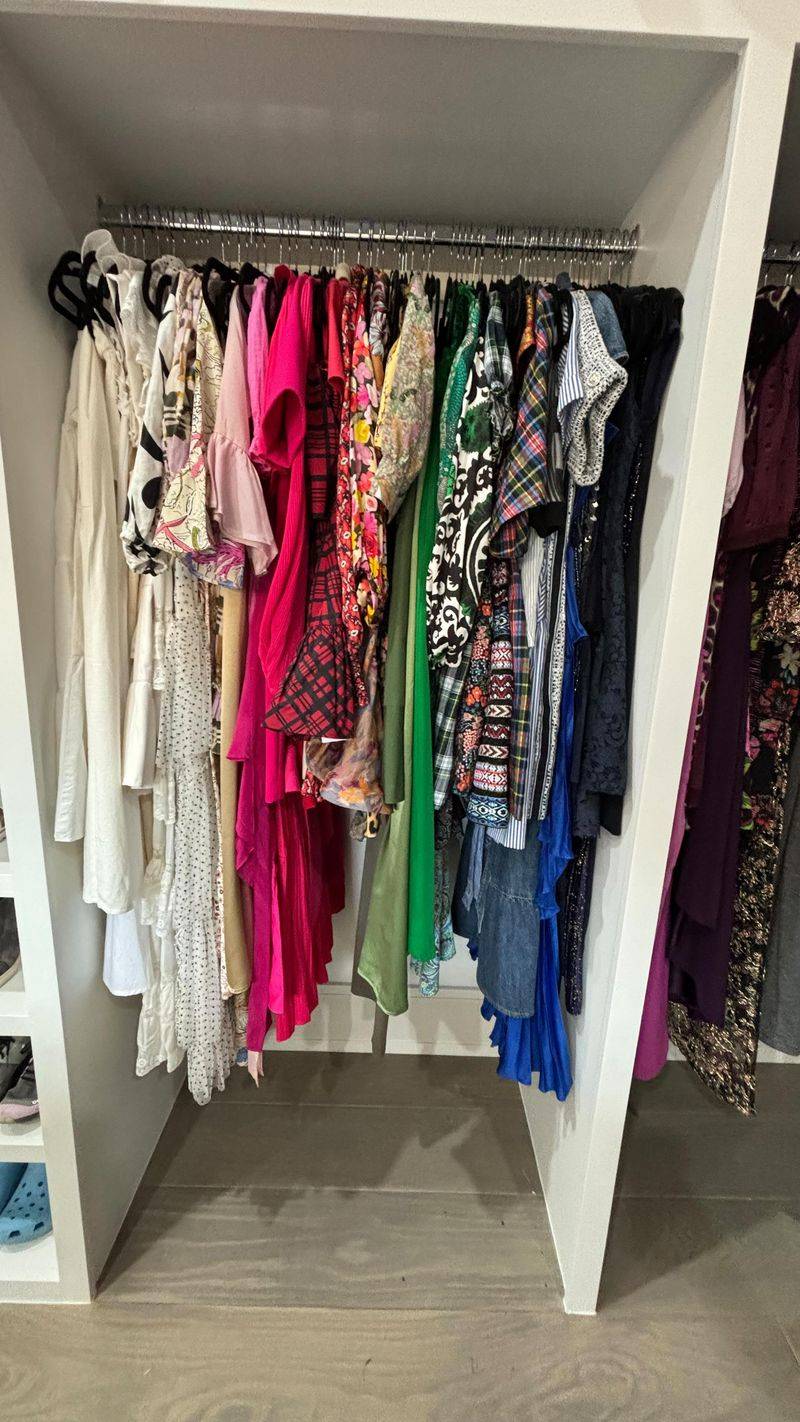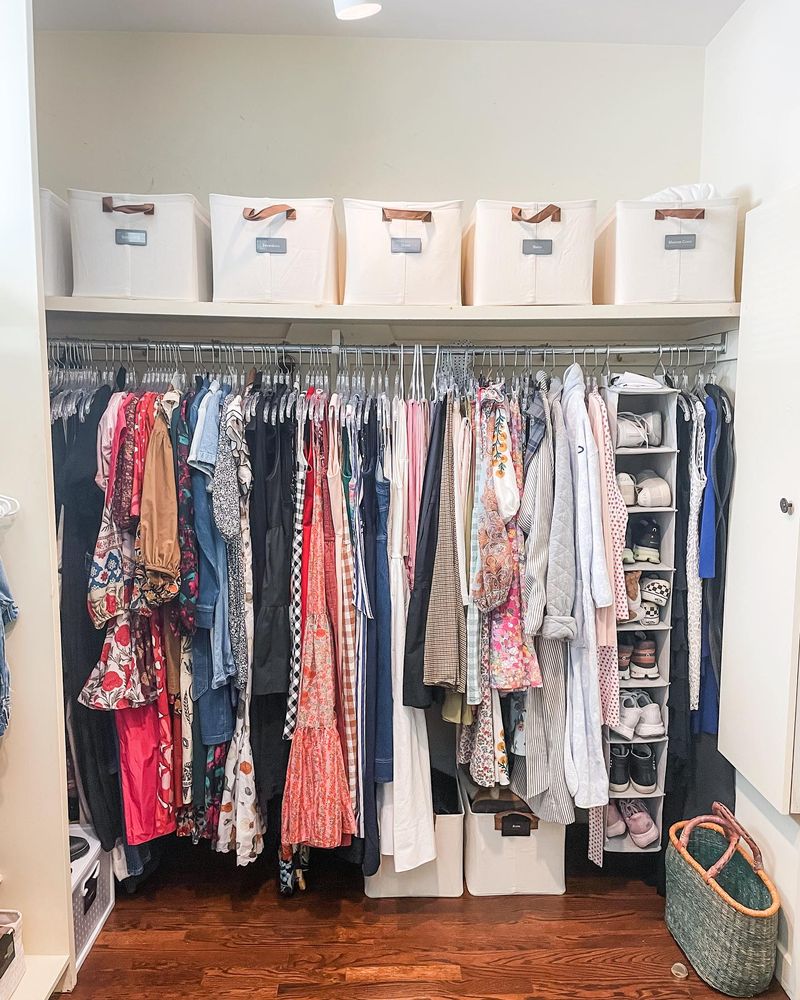15 Biggest Mistakes To Avoid When Cleaning Out Your Closet
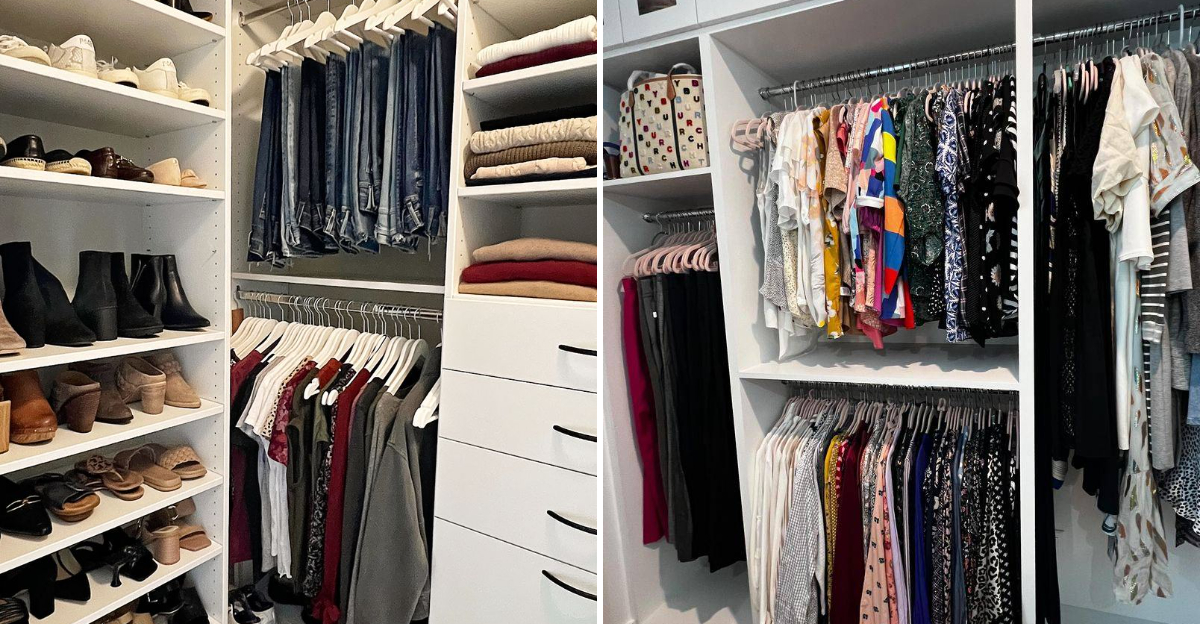
Closet cleaning day can feel like therapy or torture, depending on your approach.
I’ve been there—surrounded by clothing mountains, wondering why I bought that leopard-print jumpsuit in the first place.
Over the years, I’ve learned that successful closet cleanouts aren’t just about tossing things out but making smart decisions about what stays and goes.
Let me share the mistakes I’ve made (so you don’t have to).
1. Ditching Timeless Basics
I once tossed a perfect white button-down during a cleaning frenzy, only to spend months hunting for a replacement. Classic items like well-fitted jeans, neutral blazers, and simple tees form the backbone of any functional wardrobe.
Your basics might seem boring compared to trendier pieces, but they’re workhorses that pair with everything. Before throwing something in the donation pile, ask yourself: “Will this still work three years from now?“
Keep those high-quality staples that transcend seasonal trends. That black cardigan might not excite you today, but you’ll thank yourself when you need it for an impromptu meeting or dinner next month.
2. Purging Solely Based on Trends
Remember those bootcut jeans everyone said would never come back? Guess what’s filling store windows again! Fashion cycles faster than most of us realize, with styles often returning every 15-20 years.
Quality pieces in classic cuts might just need a styling update rather than a trip to the donation center. I’ve kicked myself more than once for discarding something that became fashionable again just months later.
Consider creating a small “maybe” storage box for unique items that aren’t currently in rotation but might deserve another chance. You’d be surprised how often yesterday’s fashion faux pas becomes tomorrow’s vintage treasure.
3. Decluttering During Emotional Times
Post-breakup purges, stress-cleaning sessions, or midnight decluttering after watching a minimalism documentary – we’ve all been there! Emotional cleanouts almost always lead to regret.
Your judgment gets clouded when you’re feeling extreme emotions. What seems unnecessary during a tearful night might actually be something you love when you’re in a better headspace.
Schedule your closet cleanout for a neutral day when you’re feeling balanced. Give yourself permission to postpone if you’re dealing with major life changes or feeling particularly vulnerable. Your future self will appreciate your restraint when you’re not rebuying clothes you impulsively tossed.
4. Skipping the Try-On Session
Memory plays tricks on us! That blue sweater you’re convinced doesn’t fit right might actually be perfect now. The pants you remember as uncomfortable might just need a different pairing.
Trying things on is non-negotiable during a proper closet cleanout. I’ve rescued countless items from the donation pile after discovering they fit differently than I remembered or worked with new items in my wardrobe.
Create a mini fashion show for yourself during the process. You might rediscover forgotten favorites or finally admit that certain items truly don’t work for you anymore. Either way, you’ll make decisions based on reality rather than potentially flawed memories.
5. Discarding Rarely-Worn Favorites
Frequency of wear isn’t always the best metric for keeping clothes. My vintage cocktail dress only comes out a few times yearly, but it makes me feel amazing every time. Some items serve specific purposes that don’t arise often.
Special occasion wear, seasonal specialties, and unique statement pieces deserve different consideration than everyday clothes. Ask yourself if you still love it and whether it serves its intended purpose well.
Consider creating a special section in your closet for these less-frequently worn treasures. Just because something doesn’t get weekly use doesn’t mean it shouldn’t earn its spot. Quality over quantity applies especially to these special pieces.
6. Hanging Onto Unflattering Items
That expensive dress that never quite fit right? It’s not doing anyone favors hanging in your closet unworn. I’ve held onto items for years simply because I spent good money on them, even though they made me feel terrible every time I put them on.
Clothes should serve you – not the other way around. If something consistently makes you feel self-conscious or uncomfortable, it’s time to thank it for its service and let it go. Someone else might love that piece that never worked for you.
Focus on keeping items that make you feel confident and comfortable. Your closet should be filled with clothes that work for your current body and lifestyle, not aspirational pieces that make you feel inadequate.
7. Tackling Everything At Once
Marathon closet cleanouts are recipes for burnout and bad decisions. I once tried to reorganize my entire wardrobe in a single Saturday and ended up with a bedroom that looked like a clothing bomb had exploded.
Breaking the task into manageable chunks makes the process less overwhelming. Start with a single category like shirts or shoes rather than emptying your entire closet at once.
Consider using the “timer method” – set a 30-minute timer and stop when it rings, regardless of how far you’ve gotten. You can always pick up where you left off tomorrow. This prevents decision fatigue, which leads to keeping everything or purging too much when you’re simply too tired to think clearly.
8. Saving Damaged Clothing
The stained blouse you’ve been meaning to treat for three years? That sweater with a hole you planned to mend last winter? Be honest – these repair projects rarely happen.
I maintained a “fix-it” basket for years, watching it grow while never actually fixing anything. Now I follow a simple rule: if I haven’t repaired it within a month, it’s time to let it go.
For items you truly love, consider scheduling an immediate repair date or taking them to a professional right away. Otherwise, acknowledge that your good intentions aren’t translating to action and free up that physical and mental space. Life’s too short to feel guilty about unmended socks!
9. Overlooking Storage Solutions
Cleaning out your closet without planning how to organize what remains is like cooking without thinking about how you’ll store leftovers. I’ve made this mistake repeatedly, ending up with nicely culled clothing that quickly became disorganized again.
Before you start, gather supplies like matching hangers, drawer dividers, and appropriate storage containers. Think about how different categories of clothing should be stored to maximize space and visibility.
Consider your habits honestly when creating systems. If you’re not a folder, don’t create a system that requires military-precision folding to maintain. The best organization system is one you’ll actually use, not necessarily the prettiest one you saw on social media.
10. Prioritizing Quantity Over Quality
Five mediocre sweaters don’t equal one perfect one that makes you feel amazing. I used to keep dozens of “okay” items instead of investing in fewer pieces I truly loved, leaving me with a stuffed closet but “nothing to wear.”
Quality pieces generally last longer, look better, and create less decision fatigue when getting dressed. When deciding what to keep, ask if you’d buy it again today at full price.
Consider implementing a one-in-one-out rule moving forward. For every new item you bring home, something else must leave. This helps maintain your newly organized space and encourages more thoughtful purchasing decisions that align with your actual needs and style preferences.
11. Ignoring Outfit Compatibility
That stunning top that matches absolutely nothing else you own? It’s not pulling its weight in your wardrobe. I’ve kept too many “orphan” pieces that required specific pairings I didn’t own or additional purchases to make them wearable.
Before deciding to keep something, mentally pair it with at least three other items in your closet. If you struggle to create outfits, that might indicate it doesn’t align with your current wardrobe.
Try the “30 wears test” – if you can’t imagine wearing something at least 30 times, reconsider keeping it. This mindset shifts focus from collecting individual pieces to building a cohesive, functional wardrobe where items work together to create multiple outfit options.
12. Mixing Seasonal Wardrobes
Pawing through heavy sweaters in July to find a t-shirt wastes precious morning minutes. Keeping all clothes accessible year-round creates unnecessary clutter and makes daily dressing more complicated than it needs to be.
Seasonal rotation keeps your active closet streamlined and functional. Store off-season clothes in underbed containers, high shelves, or vacuum bags to free up prime closet real estate for what you’re actually wearing now.
The transition between seasons provides a natural opportunity to reassess items as you rotate them. That winter coat you didn’t reach for once last year? Perhaps it shouldn’t make the cut when unpacking next fall. This creates a natural, ongoing editing process without the pressure of a major cleanout.
13. Hastily Removing Sentimental Items
That concert t-shirt from your first date with your spouse might not be in regular rotation, but it carries irreplaceable memories. Sentimental items deserve special consideration during closet cleanouts.
I regretted quickly donating my grandmother’s scarf during a minimalism phase. Now I create a separate “memory keep” box for truly sentimental pieces that aren’t part of my regular wardrobe but hold significant emotional value.
For items with memories attached that you don’t want to keep, consider taking photos before donating. Sometimes preserving the memory is enough, and you don’t need the physical item taking up space. For truly special pieces, repurposing them into quilts or framed art can honor their significance while giving them new life.
14. Hoarding Unnecessary Duplicates
Seven nearly identical black t-shirts? Four pairs of dark wash jeans? Duplicates happen gradually – you forget what you own or think you need backups. Before you know it, valuable closet space is consumed by multiples.
When I finally laid out all my white button-downs side by side, I realized I had six versions of essentially the same shirt. I kept the two best and haven’t missed the others since.
Challenge yourself to keep only the best version of duplicate items. If items are truly identical, keeping more than two is rarely necessary. This rule applies even to basics – yes, even black t-shirts! Your future self will appreciate the extra breathing room and clearer choices when getting dressed.
15. Not Being Honest With Yourself
Those “someday” clothes – the jeans from college, the dress for “when I lose weight” – occupy both physical and mental space. I kept a “goal dress” for years, and it only served to make me feel bad every time I glimpsed it.
Your closet should support who you are today, not who you were or hope to be someday. Keeping aspirational clothing often creates negative feelings rather than motivation. Dress the body you have now with clothes that make you feel good.
If your size changes in the future, treat yourself to new clothes that fit properly and reflect your current style. Meanwhile, someone else could be enjoying and using those items that aren’t serving you now. Honesty with yourself is perhaps the most important element of successful closet maintenance.

